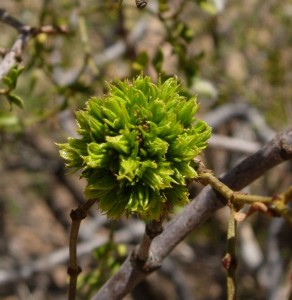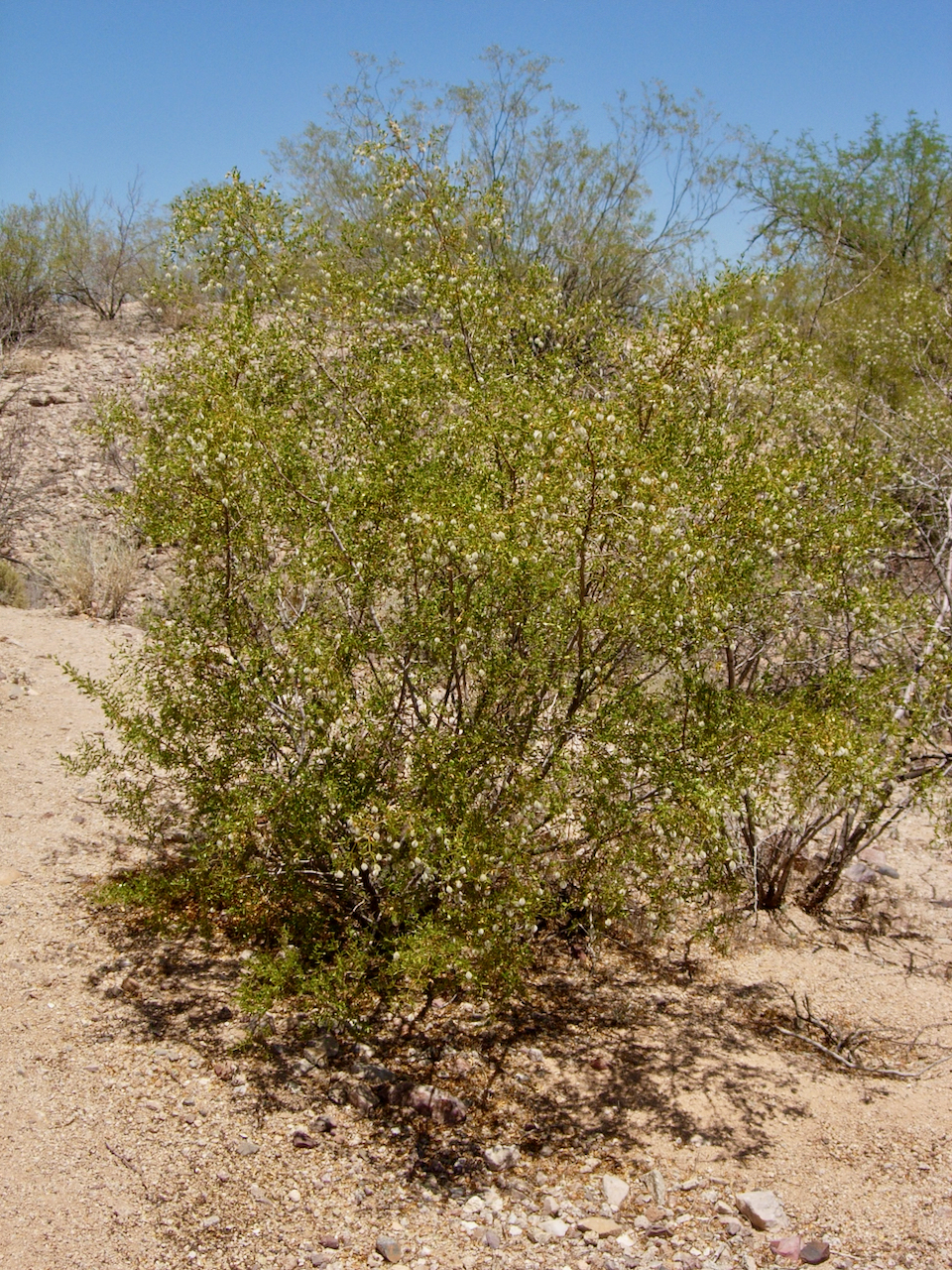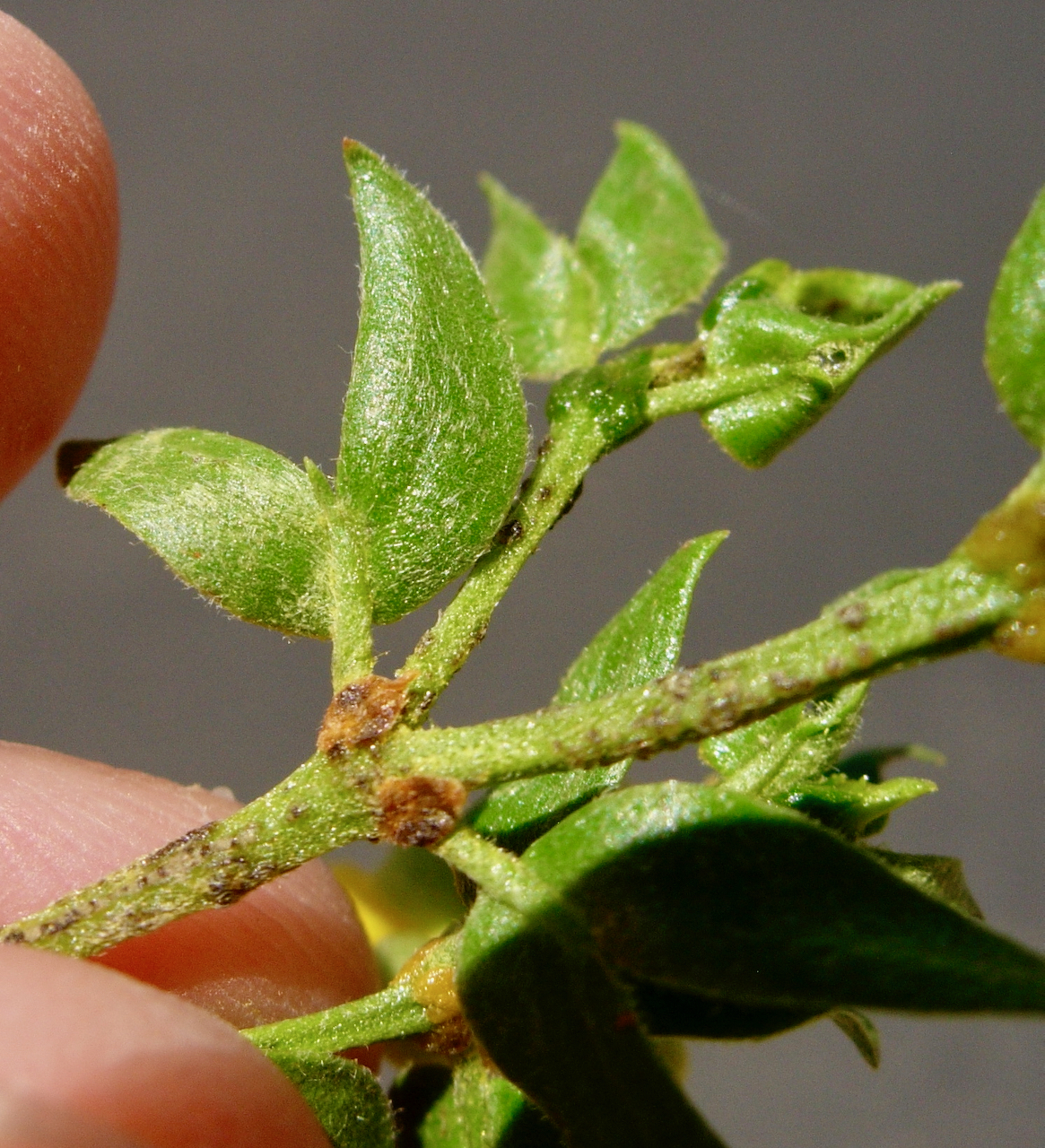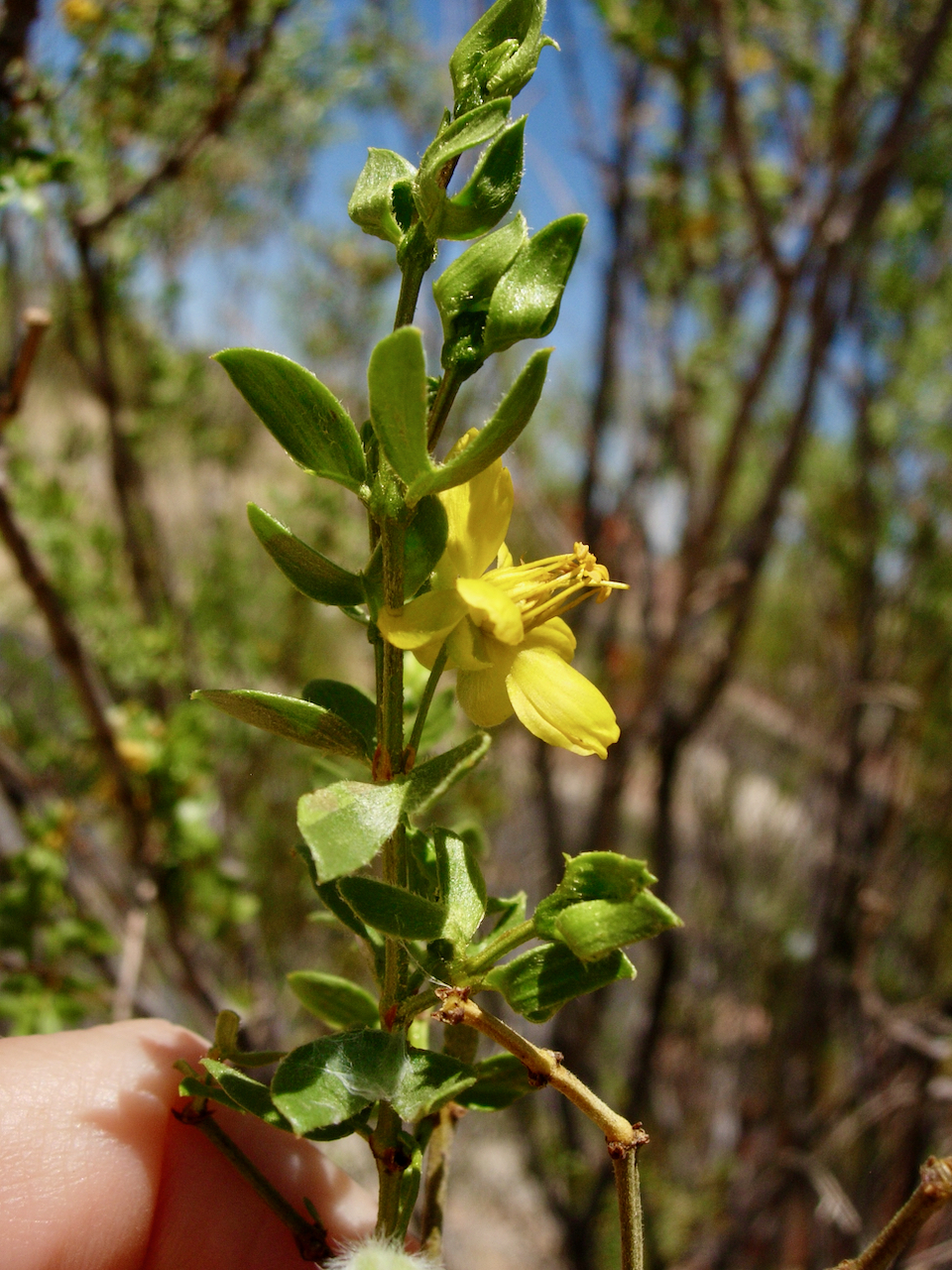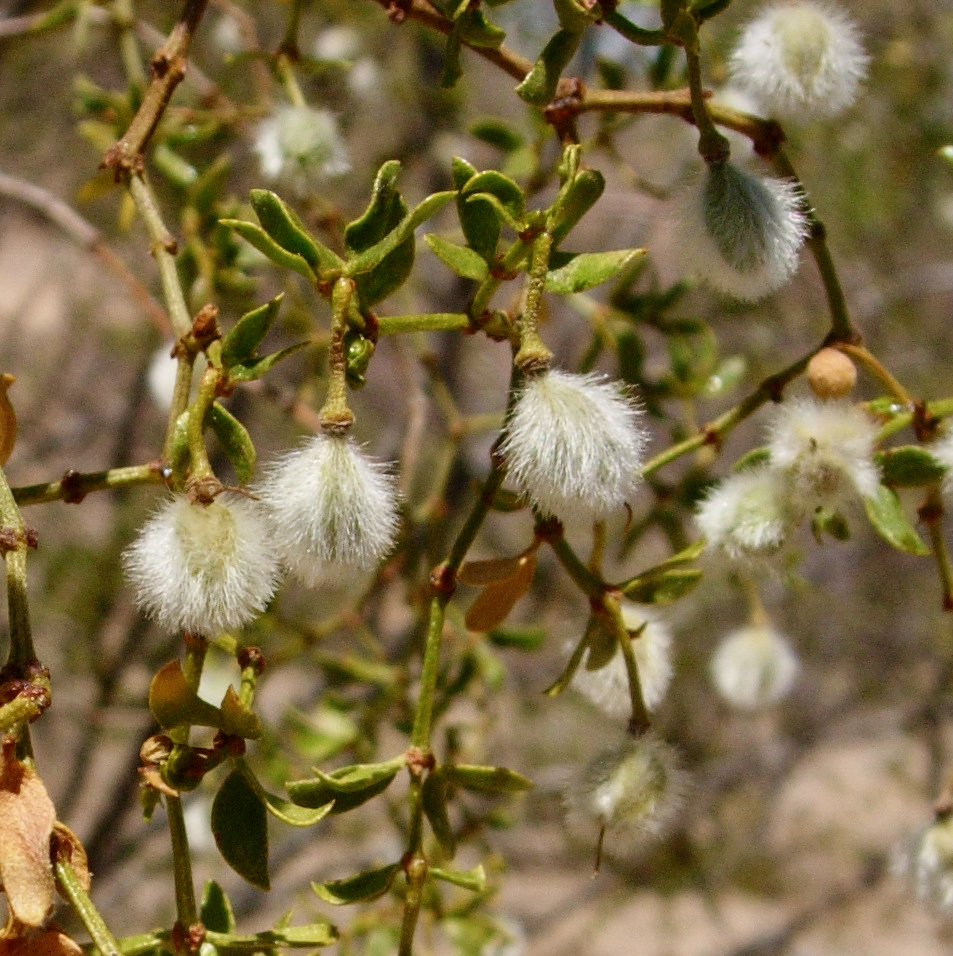Creosote, greasewood
Larrea tridentata
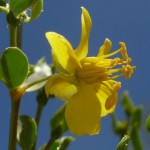
About the Plant
If you know the smell of the desert after a rain, then you know the fragrance of creosote. This bush is found in all three of our warm deserts (Sonoran, Chihuahuan, Mojave) and south into Mexico. It can survive on as little as 3 inches of rain a year and can survive two years without rainfall. The yellow flowers are heaviest in spring but can appear any time there is sufficient rain.
Grow creosote in full sun. Limiting irrigation and fertilizer will allow creosote to develop its distinctive gnarled, irregular shape as will limiting pruning to removing dead wood or eliminating that one wayward branch. Creosote usually responds with vigorous new growth if cut back. You may occasionally find a 1-inch ball of distorted foliage on a branch. This is a gall caused by a tiny fly (midge) and does not harm the plant. There is no need to take action.
This midge gall will eventually turn brown and dry.
Wildlife value: birds, particularly verdins, feed on creosote fruit and flowers and scavenge insects in the leaves and galls. Small rodents and reptiles also eat the fruit.
More Information:
Horticultural information from ASU
Information from USDA Forest Service
Information from Joshua Tree National Park
Warning against using creosote (chaparral) medicinally
Technical botanical description from SEINet
In books:
Native Plants for Southwestern Landscapes by Judy Mielke, page 175.
Trees and Shrubs for the Southwest by Mary Irish, page 217.
ID Characteristics
This plant is in the Zygophyllaceae - the caltrop family.
Creosote can grow 10 feet high and wide. Plants will be smaller without irrigation or if rainfall is poor. The older branches are dark and brittle and will be visible if the inner leaves fall due to drought. It is usually found growing on loose, well-drained soil between sea level and 5,000 feet.
Creosote leaves are evergreen, resinous, waxy, strong-scented, and dark green to olive in color. Each leaf is composed of two leaflets joined at the base. If you click on the above photo to enlarge, you will see the small point between the two leaflets. This is an extension of the leaf stalk (petiole). Its presence gives rise to the name "tridentata" (3 teeth) in the scientific name. The leaves are opposite, with reddish stipules at their base.
Creosote flowers are yellow with 5 petals, 0.5 inch wide. The stamen are held up around the pistil. You may find flowers on creosote any month of the year if there has been sufficient rain.
Creosote fruit is pea-sized and densely covered with white, almost silvery, hairs. Note the remains of the style at the tip of some of the fruit (e.g. on out-of-focus fruit lowest in the photo).
